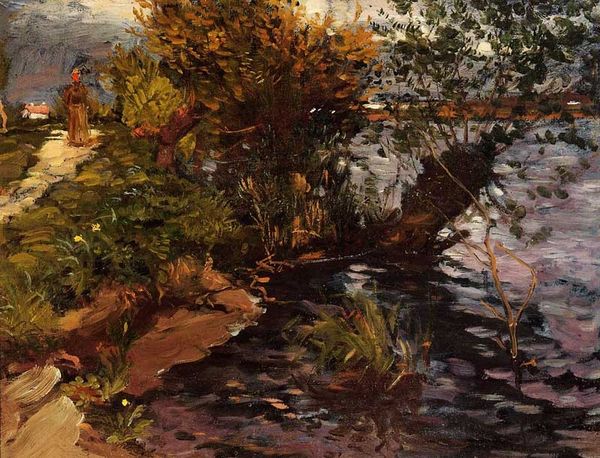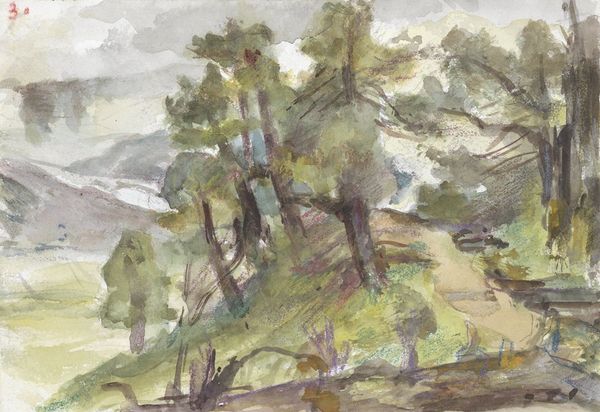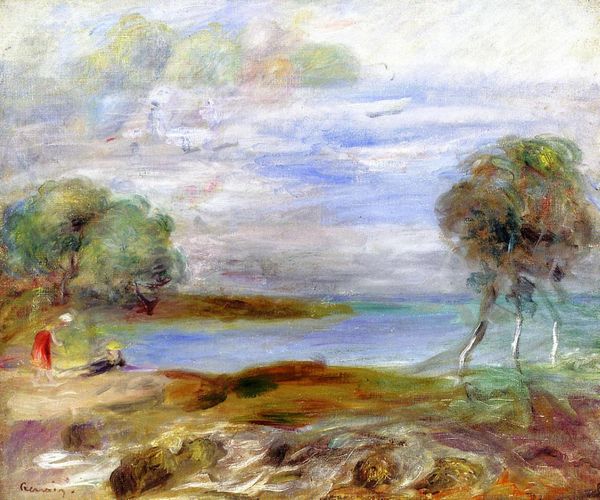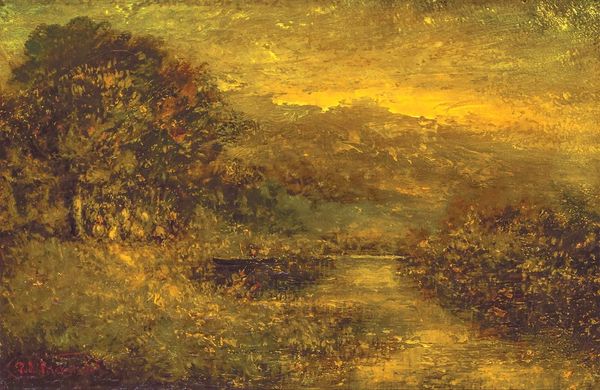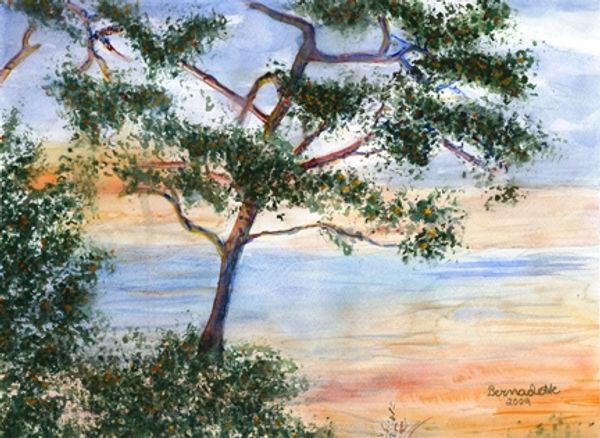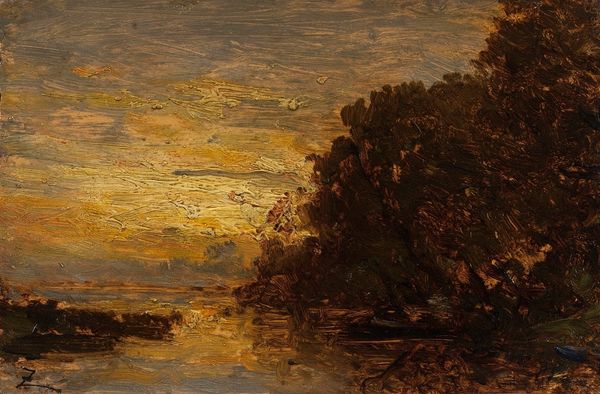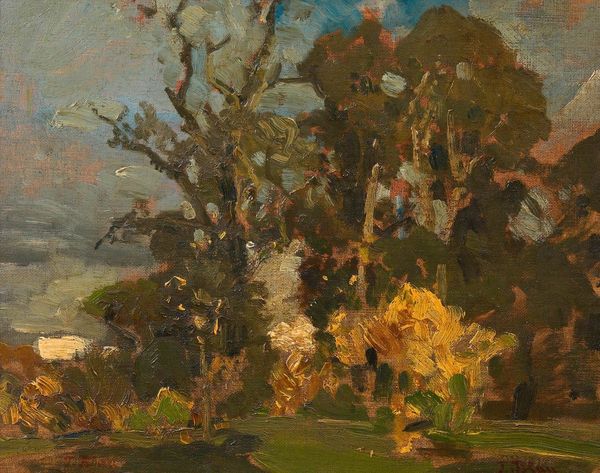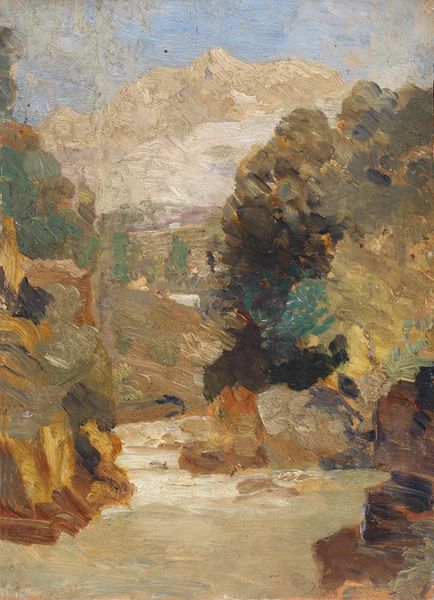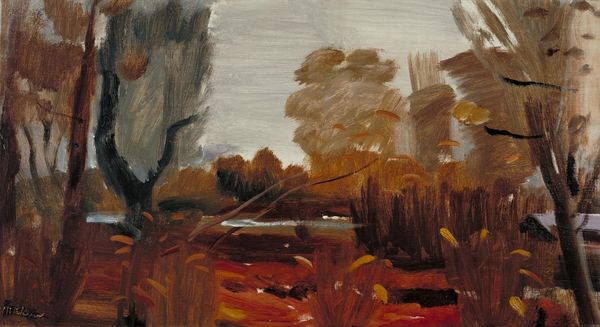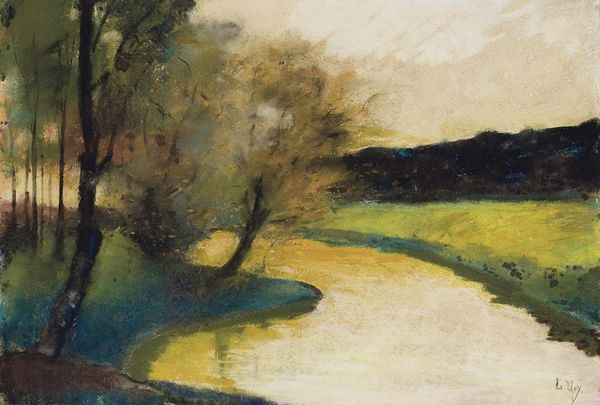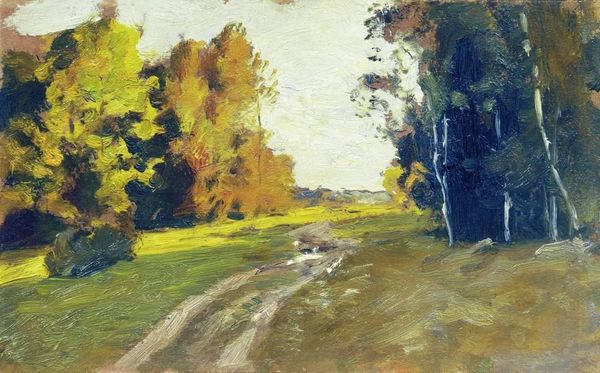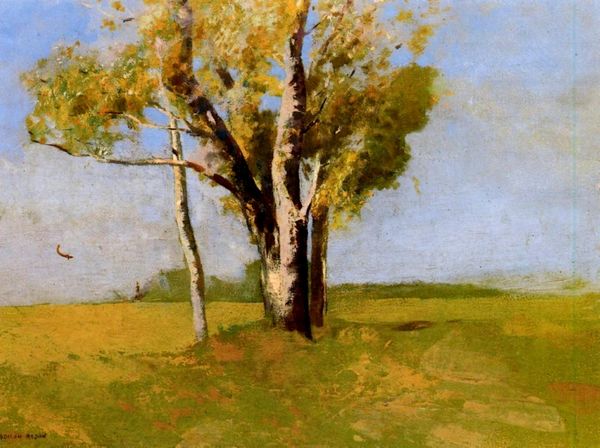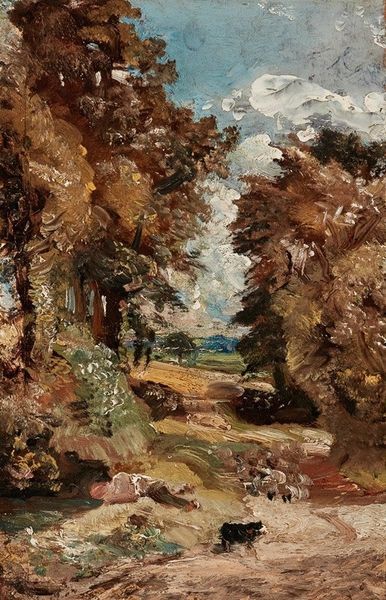
Copyright: Public domain
Curator: Painted in 1894, Tom Roberts’ oil on canvas work, "Landscape, Cremorne", offers us a glimpse of an Australian cityscape rendered in the plein-air style of Impressionism. Editor: It's breezy. The quick strokes, the choice of a very particular blue for the water—it all feels immediate, captured in a short span of time. Curator: Roberts was fascinated with capturing the fleeting effects of light and atmosphere. Note the brushstrokes; how would you describe the paint application itself? Editor: Definitely thin, layered, with visible brushwork. There is something workaday about it – less like an artistic statement and more like a recording of experience. Look at that vibrant blue, juxtaposed with earthy greens and browns. He must have been racing the light. I wonder about his setup. The physical demands of outdoor painting—managing materials, battling the elements—are substantial. Curator: Absolutely. And those material conditions directly shaped the artistic choices made in "Landscape, Cremorne." The shimmering water, a quintessential image we have seen before. Can that luminosity become a kind of shorthand? And how can the urban blend into a wider, national identity? Editor: Shorthand or not, Roberts' choice speaks volumes. Water, often a conduit of trade and industry, reflects the aspirations of a developing nation. The visible strokes celebrate the manual act of production, the direct, sensory interaction with the world through paint and brush. Curator: Considering how Cremorne developed subsequently, do you think Roberts perhaps intuited a changing Australia, and how might that feed back into perceptions about progress? Editor: Maybe. Roberts captured a specific moment, yes. He was concerned less with documenting detail than evoking sensation, how light feels at Cremorne. He allows the landscape to emerge organically. The piece honors a distinctly tactile relationship with the land. It also raises questions of value: What stories do we enshrine, and what labor remains unseen in the broader narratives of landscape? Curator: This reminds me how landscapes in art reflect cultural values and desires for an aestheticization. I’ll be rethinking a few of these questions myself now. Editor: It's about engaging with the world, directly and materially. And thinking about what that experience does and doesn’t encompass. A good piece to turn over and contemplate!
Comments
No comments
Be the first to comment and join the conversation on the ultimate creative platform.

